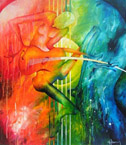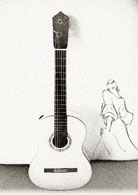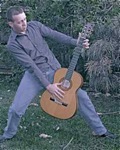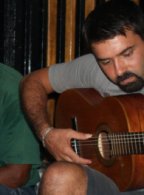Welcome to one of the most active flamenco sites on the Internet. Guests can read most posts but if you want to participate click here to register.
This site is dedicated to the memory of Paco de Lucía, Ron Mitchell, Guy Williams, Linda Elvira, Philip John Lee, Craig Eros, Ben Woods, David Serva and Tom Blackshear who went ahead of us.
We receive 12,200 visitors a month from 200 countries and 1.7 million page impressions a year. To advertise on this site please contact us.
|

|
|
Ritmo as important as falsetas
|
You are logged in as Guest
|
|
Users viewing this topic: none
|
|
Login  | |
|

   
xirdneH_imiJ
Posts: 1890
Joined: Dec. 2 2006
From: Budapest, now in Southampton

|
 RE: Ritmo as important as falsetas (in reply to CarloJuan) RE: Ritmo as important as falsetas (in reply to CarloJuan)
|
|
|
play, play, play, listen, listen, listen, play, play, play...
it's even better when you play for a dance class too...you need to be very comfortable with the palo to be able to vary the rhythm...you can listen to and try to imitate variations, but after a while it'll just come naturally...
|
|
|
|
REPORT THIS POST AS INAPPROPRIATE |
Date Sep. 20 2010 9:56:16
 |
|
 New Messages New Messages |
 No New Messages No New Messages |
 Hot Topic w/ New Messages Hot Topic w/ New Messages |
 Hot Topic w/o New Messages Hot Topic w/o New Messages |
 Locked w/ New Messages Locked w/ New Messages |
 Locked w/o New Messages Locked w/o New Messages |
|
 Post New Thread
Post New Thread
 Reply to Message
Reply to Message
 Post New Poll
Post New Poll
 Submit Vote
Submit Vote
 Delete My Own Post
Delete My Own Post
 Delete My Own Thread
Delete My Own Thread
 Rate Posts
Rate Posts
|
|
|
Forum Software powered by ASP Playground Advanced Edition 2.0.5
Copyright © 2000 - 2003 ASPPlayground.NET |
6.152344E-02 secs.
|


 Printable Version
Printable Version



 I know this is basic and essential but how do you variate the simple compas of the bulerias, alegrias, solea, or any palo in the family of 12ths? Sometimes the falseta is awesome enough to hear and enjoy but the ritmo that comes before or after it (llmada?), if played by the performer with aire, is what it takes more enough to make the "ooohs" and "aaahs" that make the whole flamenco listening experience so worthwhile and addicting.
I know this is basic and essential but how do you variate the simple compas of the bulerias, alegrias, solea, or any palo in the family of 12ths? Sometimes the falseta is awesome enough to hear and enjoy but the ritmo that comes before or after it (llmada?), if played by the performer with aire, is what it takes more enough to make the "ooohs" and "aaahs" that make the whole flamenco listening experience so worthwhile and addicting. 







 New Messages
New Messages No New Messages
No New Messages Hot Topic w/ New Messages
Hot Topic w/ New Messages Hot Topic w/o New Messages
Hot Topic w/o New Messages Locked w/ New Messages
Locked w/ New Messages Locked w/o New Messages
Locked w/o New Messages Post New Thread
Post New Thread